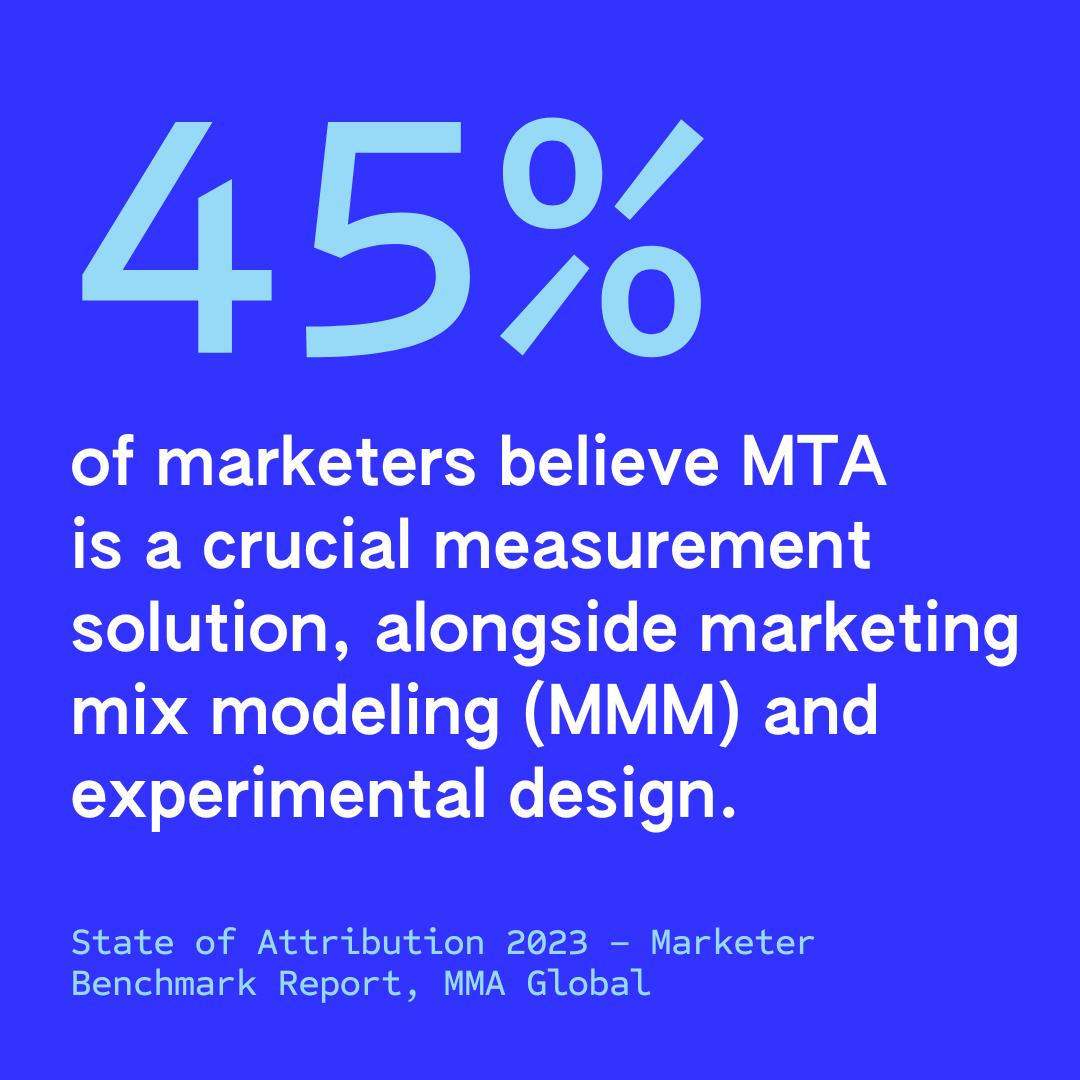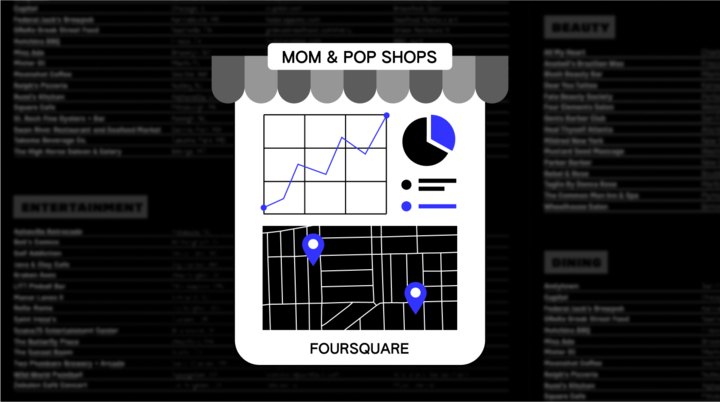If businesses wish to increase success with digital marketing, they must consider multi-touch attribution (MTA). MTA is a more precise approach to multi-channel attribution, which uses analytics to understand the effectiveness of marketing efforts at every touchpoint. Instead of just providing conversions at the first and last touchpoint like single-touch attribution does, multi-touch attribution can offer comprehensive insights into the full customer journey to boost conversion rate by gathering data at different touchpoints. It looks at various points of conversion including paid search ads, social media, and email, to understand how much “conversion credit” each should receive.
Businesses can get more specific by using multi-touch attribution. Whereas multi-channel attribution assigns credit by channel, MTA considers individual marketing campaigns and paid ads. This includes the channel used, messaging, and the sequence of customer interactions. Learn more about multi-touch attribution and its benefits.
What is Multi-Touch Attribution?
Multi-touch attribution allows marketing teams to understand the value of all touchpoints along the customer journey. It’s sometimes called fractional attribution because it involves assigning fractional credit to these touchpoints based on the value they provide for conversion. Through MTA, marketers know which touchpoints most impact conversion and which to give the most focus.
Consider a company selling home goods and a customer looking for bedding sets. When they input a keyword into the search engine, they might discover a landing page that ranks well due to an organic search campaign. On the page, they might fill out a form with their contact information. The customer doesn’t purchase a bedding set until later when they receive a promotional email touting a discount. It’s this email that leads them to purchase.
Notice how the organic search made the customer aware of the company’s products, but the conversion event happened with the email. In other words, it’s the email that gets more conversion credit. It’s common for each touchpoint not to receive equal credit, as part of MTA is discovering which touchpoints to prioritize.
Why Is Attribution Important?
Marketers across many industries find multi-touch attribution essential to their overall marketing strategy. In its global State of Attribution 2023 – Marketer Benchmark Report, MMA Global found that 45% of marketers believe MTA is a crucial measurement solution, alongside marketing mix modeling (MMM) and experimental design.

There are many benefits of multi-touch attribution, but its main advantage is improving the customer journey and conversion rate. Having a comprehensive view of all marketing channels and touchpoints offers insight to increase the effectiveness of future efforts. It also reveals how these channels and touchpoints work together to influence sales.
All marketing teams want content that matters to their target audiences. Marketing attribution reveals the aspects that most inform customer decision-making, which can strengthen messaging and further boost conversions.
Multi-Touch Attribution vs. First-Touch & Last-Touch Models
As mentioned, another approach to marketing attribution is the single-touch attribution model, which includes first-touch and last-touch. Consider how the multi-touch attribution model differs from these approaches below:
Multi-Touch Attribution vs. First-Touch Attribution
As it sounds, first-touch attribution focuses on the first touchpoint before conversion. For example, a pay-per-click campaign through Google Ads would be the first touchpoint and thus get all conversion credit. This is true even if the customer interacted with various touchpoints.
First-touch attribution considers only the touchpoints most effective at the beginning of the customer’s journey. Marketers may use it to learn more about marketing efforts at the awareness stage and to understand how useful they are in bringing prospects further down the sales funnel.
Multi-Touch Attribution vs. Last-Touch Attribution
Last-touch attribution focuses on the final touchpoint before conversion. A paid ad might be what leads a prospect to your website and generates awareness about your products or services. However, the prospect doesn’t decide to purchase until they see a native ad on social media. In this case, the social media ad is the last touchpoint and receives all credit.
Last-touch attribution helps when focusing only on the main driving force of conversions. It’s more common than first-touch attribution but presents a similar challenge. It neglects touchpoints at the beginning and middle of the customer journey. It’s only because of these previous interactions that the last touchpoint brought conversion.
Benefits of Multi-Touch Attribution
Weighted toward the beginning or end of the customer journey, first-touch and last-touch attribution neglect touchpoints at the other end to make sense of conversion. Neither provides a clear picture of what happens in the middle of the customer journey.
Multi-touch attribution offers the balance marketers need for an accurate understanding of conversion. The benefits of multi-touch attribution include:
Boosts marketing ROI, showing how to allocate ad spend effectively
Enables data-driven decisions for marketing campaigns, such as tailoring messaging to reach prospects at the right channel and at the right time
Enhances the customer experience by helping marketers discover target audiences across multiple channels and their marketing preferences
Increases visibility into touchpoints and their value at each stage of the customer journey
Optimizes sales cycles by allowing marketing teams to focus on fewer, more meaningful messages
6 Types of Multi-Touch Attribution Models
The multi-touch attribution model is further categorized into several types, with the main difference being how much credit each touchpoint receives. Here are six common types in more detail:
Linear Attribution Model
The linear attribution model is seen as the standard of multi-touch attribution. Sometimes called even-weighting attribution, it gives equal credit for conversions to every touchpoint. It’s rare for each touchpoint to have the same impact, so the linear model is only best in certain cases. Use cases include:
- Measuring the impact of all marketing efforts during an extended consideration phase
- Understanding how touchpoints work together to inform a sale
- Developing a baseline of how different touchpoints rate with your target audience
Time-Decay Attribution Model
The time-decay model organizes touchpoints according to the percentage of influence they have on a conversion. Like last-touch attribution, time-decay attribution focuses on touchpoints at the bottom of the sales funnel but still gives credit to touchpoints at the awareness and consideration stages. Marketers may use time-decay attribution when evaluating the success of campaigns and other short-term touchpoints.
U-Shaped Attribution Model
The U-shaped model builds on the linear model, understanding that each touchpoint isn’t equal. It gives the first and last touchpoints a higher percentage of conversion credit — typically about 40%. The remaining 20% goes to middle touchpoints. It may also be referred to as position-based attribution or the “bathtub” model. U-shaped attribution better reflects how marketing teams value touchpoints, with the most credits weighted at both ends of the customer journey.
W-Shaped Attribution Model
The W-shaped model gives credit to the first touchpoint, key middle touchpoints, and the final touchpoint. These three touchpoints receive 30% of the total credit, with the remaining 10% going to additional interactions.
W-shaped attribution is beneficial for understanding which touchpoints convert leads and keep prospects engaged as they move along the customer journey. It makes sense when marketers have identified opportunity creation that may drive conversion in a different direction.
Full Path Attribution Model
The full path attribution model is a more sophisticated version of the W-shaped model. It includes an additional touchpoint — lead creation. Lead creation is when the marketing team realizes a prospect has become a qualified lead. Four touchpoints —first interaction, lead creation, opportunity creation, and the final conversion — receive about 22.5% credit each. The remaining 10% goes to other touchpoints.
You might use full path attribution if marketing for a B2B company. It’s also used in industries where there are many moving parts during the consideration phase, like the automobile industry.
Custom Attribution Model
After studying different multi-touch attribution models, marketers may find they like certain features of each. They may want to create custom models that combine these features. This way, they can customize how much weight each touchpoint receives according to their specific sales funnel.
Developing a custom attribution model is a complex pursuit that requires advanced marketing attribution software. Marketing teams are advised to experiment with different models to assess the advantages and disadvantages. They also want to research software to decide which is best for their needs.
The Impact of Multi-Touch Attribution on Digital Marketing Strategies
Multi-touch attribution has implications for your overall digital marketing strategy. A key advantage is optimizing marketing ROI. MTA enables more effective resource allocation, which maximizes the budget while enhancing performance.
Managing various marketing channels is challenging, but MTA simplifies this by highlighting the value of each for conversions and revenue. Beyond revealing which channels to prioritize, it also indicates the types of content and messaging most relevant.
Increasingly, marketers find that MTA is a valuable marketing metric. In the MMA Global’s State of Attribution 2023 – Marketer Benchmark Report, both users and non-users of MTA agree that approximately 40% of media can be analyzed using MTA, highlighting a convergence in understanding the share of media analyzed by MTA.
Overall, MTA provides the flexibility marketers need as they manage various campaigns across multiple channels. It takes a granular look at what works and where teams can improve. It provides the insight necessary to make data-driven decisions for future efforts.
Discover a Multi-Touch Measurement Solution from Foursquare
For marketers who’ve yet to consider multi-touch attribution, now is the time. The State of Attribution 2023 – Marketer Benchmark Report found that approximately 50% of marketers used MTA as part of their measurement and attribution strategy in 2023.
For a multi-touch omnichannel attribution tool that shows the efficiency of marketing investments across multiple channels, consider Foursquare Attribution. Unique features include:
- Sophisticated, clean data and methodology powered by graph technology for accuracy
- Omnichannel Dashboard that updates daily to maximize marketing investments in real-time
- Privacy-first approach with opt-in consent and easy opt-out and frequent audits on data partners
- Flexibility across top media platforms with 550+ integrations for comprehensive coverage of your media plan
Contact us today to speak with an expert and learn more about Foursquare Attribution.
Reviewed By: Arianna Vogel



